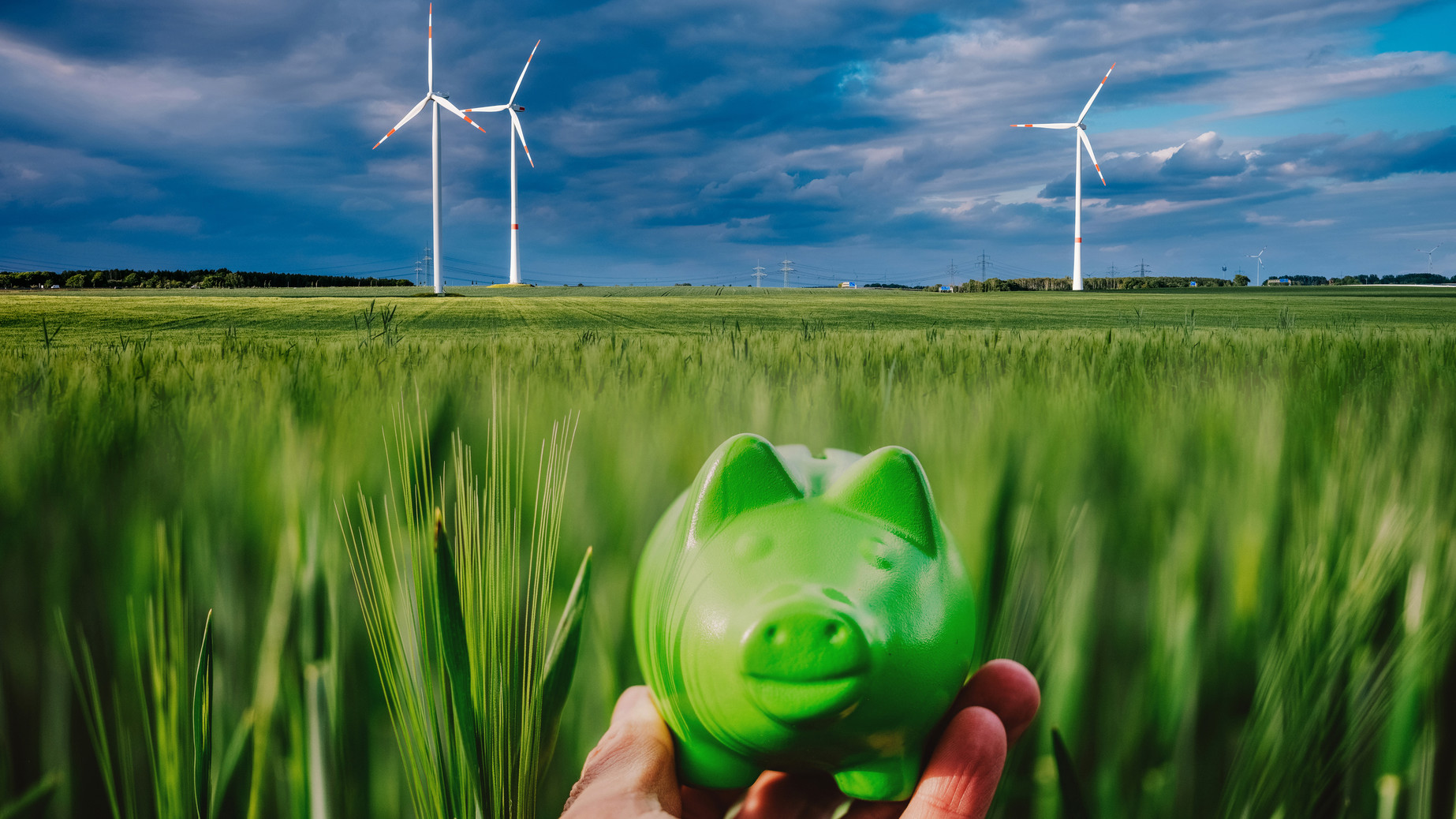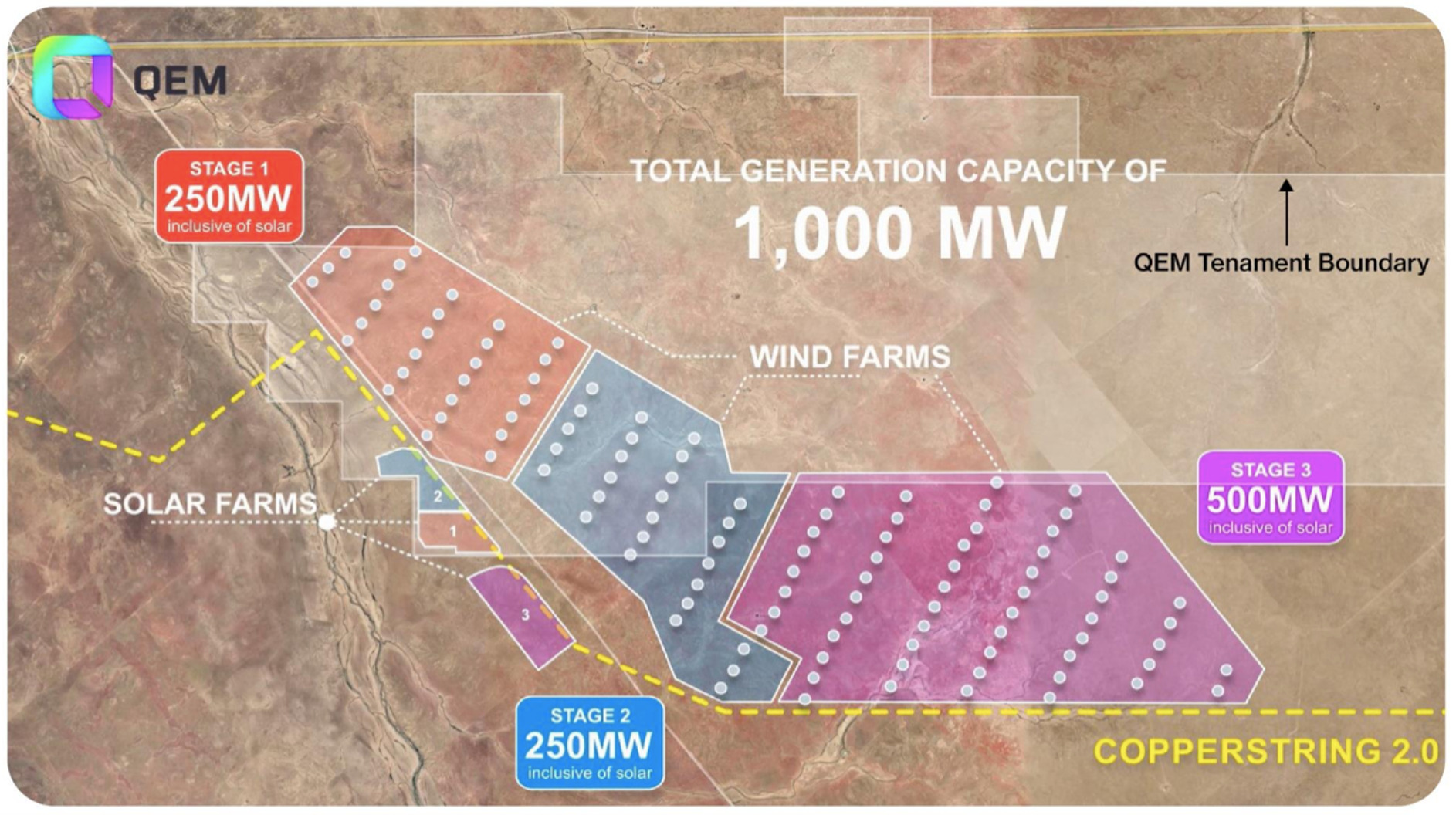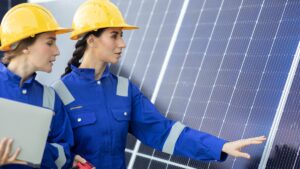Meet the ASX resource players eco-piggy-banking their operations with renewables

Pic: via Getty Images
Energy is one of the biggest expenses for mining companies. Back in 2017 Deloitte estimated energy costs take up around 30% of total operating costs in the resources sector.
That number might be higher now, especially when you consider the ongoing strains and volatility in traditional oil and gas energy markets today.
Earlier this week the World Bank reported that oil prices could be pushed into “uncharted waters” if the violence between Israel and Hamas widens.
With war throwing uncertainty into the energy market, adding renewables like solar, wind, hydro or geothermal to the mix is more appealing than ever.
Especially since the rewards of shaving off even a fraction of the energy costs to operate a mine could be considerable – and there’s the added side effect of cleaning up the image of ‘dirty’ mines adding to global pollution.
Just this month the International Energy Agency (IEA) predicted renewables would provide half of the world’s electricity by 2030 and said the transition to clean energy is “unstoppable.”
“The transition to clean energy is happening worldwide and it’s unstoppable. It’s not a question of ‘if’, it’s just a matter of ‘how soon’ – and the sooner the better for all of us,” IEA executive director Fatih Birol said.
“Governments, companies and investors need to get behind clean energy transitions rather than hindering them.”
It’s worth noting however that using renewable energy on mine sites really only helps with Scope 1 emissions, which are associated with primary production.
Scope 2 emissions involve the supply chain and Scope 3 are those created by end users, like power plants and steel mills.
Even so, addressing Scope 1 emissions is a great start in emissions reduction from mine sites, comes with cost savings and preserve the mine’s social licence to operate – which is becoming increasingly important to ESG savvy stakeholders.
1 gigawatt of renewables in the works
Securing their ESG credentials quicker than most is QEM (ASX:QEM), whose 249.6km2 Julia Creek vanadium project boasts a resource of 2,850Mt grading 0.31% vanadium pentoxide category as well as a best estimate (2C) Contingent Resource of 79 million barrels of oil contained within its shales.
And it’s smack bang in the middle of the Queensland government’s massive CopperString project, a 1,100km electricity transmission line from Townsville to Mount Isa that will connect Queensland’s North West Minerals Province (NWMP) to the national electricity grid.
QEM plans to tap into CopperString for its project, with the development of up to 1 gigawatt (GW) of renewable energy from a hybrid wind and solar farm in the works.
1GW is ridiculously huge.
For context, the US Energy Dept says it’s equivalent to 2.469 million photovoltaic (PV) panels, 310 utility-scale wind turbines, 100 million LED bulbs, or just shy of the power required to send Doc’s DeLorean through time in Back to the Future Part 2 (1.21GW).

Not only will this be one of Queensland’s largest renewable energy projects, it also has the potential to provide cheaper power for Julia Creek and contribute to both the state and Federal Government renewable energy and emission reduction targets.
“The main benefit for us of using renewables to power the project is it will give us a competitive advantage in the fact that we’ll have a set set price for power for a number of years,” QEM MD Gavin Loyden told Stockhead.
“We did a desktop study to see if it was viable, then we did a pre-feasibility study and the numbers stacked up quite well – in fact it’s one of the best rated areas of the country for both wind and solar.”
“We then reached out to global developers to see if there was interest and there was a great deal of interest.
“Now we’ve whittled it down to three bids from ACCIONA Energía, Enel Green Power, and a joint bid from Origin Energy and Energy Estate – all experienced power companies – for the development, ownership and operation of the renewables project.
“It will be a minimum of a gigawatt, combining wind and solar that will plug straight into CopperString.”
Along with the vanadium resource at the project – which comes with its own green credentials for its use in energy storage for Vanadium Redox Flow Batteries (VRFBs) and steel production – Loyden said being ESG conscious was particularly relevant when looking at extracting the shale resource.
“It was always going to be renewable energy one way or the other, producing green hydrogen, to extract the oil from the material,” he said.
QEM’s intention with the shale oil is to produce transport fuel diesel and distribute it through the Northwest minerals province – because otherwise 98% of it comes in from Malaysia and China.
“If you add up the carbon footprint of importing it, taking it to Brisbane, and then sending it out to Mount Isa and everywhere in between, costs – and footprint – go up and up,” Loyden said.
“We want to make our project as green as humanly possible.
“Whether we can get close to net zero is yet to be seen, but that is our intent.”
QEM share price today:
What other explorers and miners are looking to renewables?
Renewables aren’t merely attracting investors now the tech is progressing into more cost-effective and efficient applications.
Renewable energy uptake is growing rapidly among unexpected corners of all 11 ASX sectors – last year global investment in the sector clocked US$2.4tn – up about 10% on 2022 and way above pre-COVID levels. And unsurprisingly, there’s a bunch of familiar ASX miners and explorers looking to add renewables to their energy mix.
Here’s an update on some of the locals testing the water:
BHP (ASX:BHP) is using its Flat Rocks wind farm and power purchase agreement from the Merredin solar farm to power its Kalgoorlie nickel smelter, Kambalda nickel concentrator and Kwinana nickel refinery.
Rio Tinto (ASX:RIO) has a 1.7MW solar farm to power its Weipa bauxite mine, is installing a 34MW photovoltaic solar farm at its Gudai-Darri iron ore mine – and is on the path to powering its Kennecott copper operations in Utah, USA with a 5MW solar plant.
And rounding out the trio, Fortescue Metals Group (ASX:FMG) uses a 60MW solar-gas hybrid with Alinta energy to meet the energy needs of its Chichester iron ore hub.
Sandfire Resources (ASX:SFR) uses solar and a 6MW lithium-ion battery storage facility, along with the existing 19MW diesel-fired power station to power its DeGrussa copper-gold mine.
And Bellevue Gold (ASX:BGL) has a power purchase agreement with a subsidiary of Zenith Energy Operations to finance, build, own, operate and maintain a 88MW hybrid wind, solar, thermal generation and battery energy storage power station to meet up to 80% of its namesake project’s power needs from renewable energy.
BHP, RIO, FMG, SFR and BGL share prices today:
Soon-to-be-producer Liontown Resources (ASX:LTR) has contracted its 95MW Kathleen Valley lithium project’s hybrid wind, solar, gas and diesel power station to Zenith Energy, with the solar farm works around 82% complete.
Syrah Resources (SYR:ASX) uses solar and a battery hybrid system at its Balama graphite operations in Mozambique, comprising an 11.25 MWp solar photovoltaic (PV) array, integrated with an 8.5 MW/MWh battery energy storage system (BESS).
Vulcan Energy (ASX:VUL) draws on naturally occurring, renewable geothermal energy to power the lithium extraction process and create a renewable energy by-product at its Zero Carbon lithium project in Germany.
Venture Minerals (ASX:VMS) plans to power the Mount Lindsay tin-tungsten deposit in Tasmania with the help of nearby hydropower facilities.
Another Tassie explorer Stellar Resources (ASX:SRZ) is eyeing 100% renewables for its Heemskirk tin project, with seven hydro power stations and the Granville Harbour Wind Farm all within 30km.
LTR, SYR, VUL, VMS and SRZ share prices today:
At Stockhead we tell it like it is. While QEM, Vulcan Energy and Venture Minerals are Stockhead advertisers, they did not sponsor this article.
Related Topics
UNLOCK INSIGHTS
Discover the untold stories of emerging ASX stocks.
Daily news and expert analysis, it's free to subscribe.
By proceeding, you confirm you understand that we handle personal information in accordance with our Privacy Policy.








